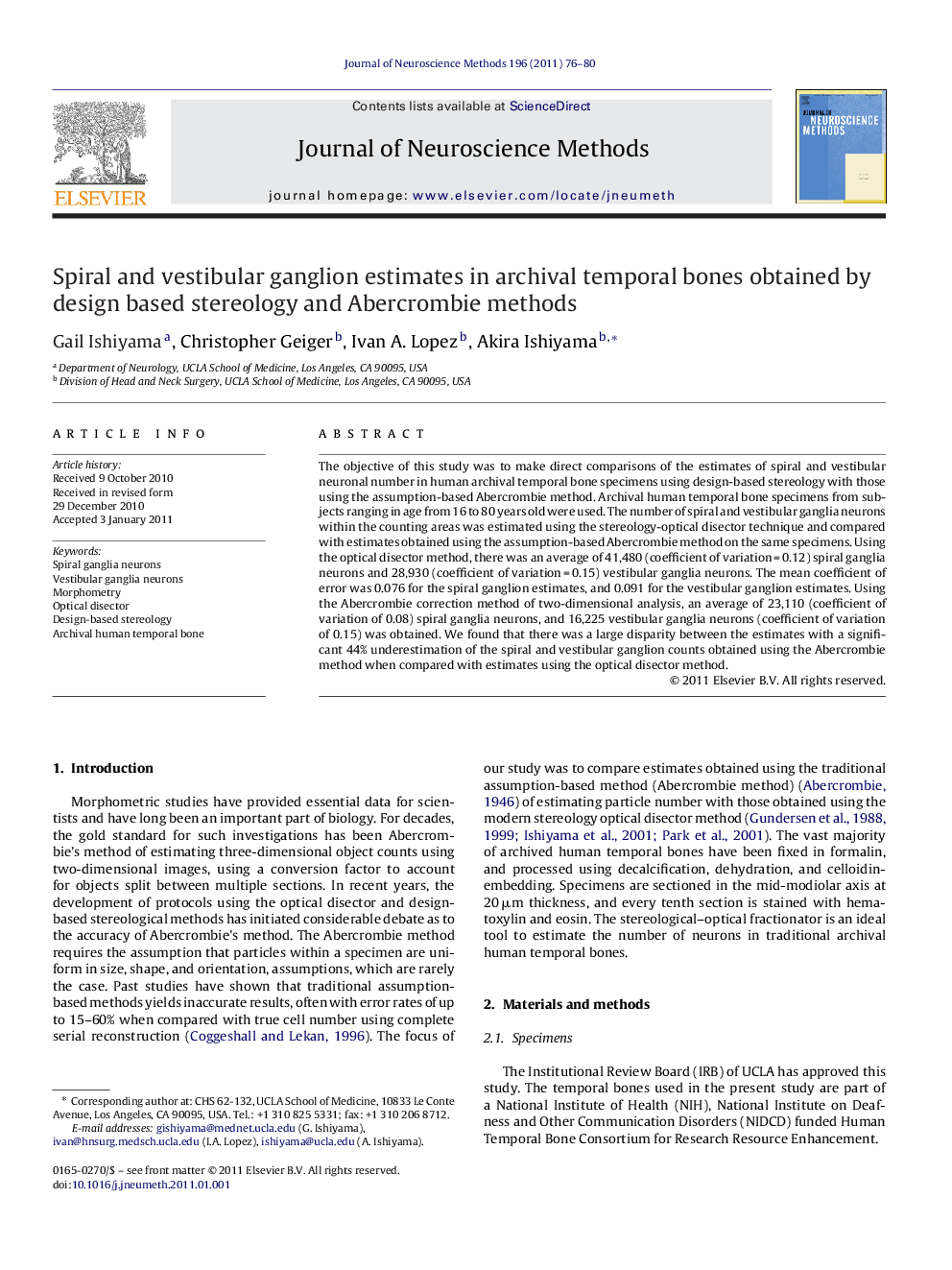| Article ID | Journal | Published Year | Pages | File Type |
|---|---|---|---|---|
| 4335420 | Journal of Neuroscience Methods | 2011 | 5 Pages |
The objective of this study was to make direct comparisons of the estimates of spiral and vestibular neuronal number in human archival temporal bone specimens using design-based stereology with those using the assumption-based Abercrombie method. Archival human temporal bone specimens from subjects ranging in age from 16 to 80 years old were used. The number of spiral and vestibular ganglia neurons within the counting areas was estimated using the stereology-optical disector technique and compared with estimates obtained using the assumption-based Abercrombie method on the same specimens. Using the optical disector method, there was an average of 41,480 (coefficient of variation = 0.12) spiral ganglia neurons and 28,930 (coefficient of variation = 0.15) vestibular ganglia neurons. The mean coefficient of error was 0.076 for the spiral ganglion estimates, and 0.091 for the vestibular ganglion estimates. Using the Abercrombie correction method of two-dimensional analysis, an average of 23,110 (coefficient of variation of 0.08) spiral ganglia neurons, and 16,225 vestibular ganglia neurons (coefficient of variation of 0.15) was obtained. We found that there was a large disparity between the estimates with a significant 44% underestimation of the spiral and vestibular ganglion counts obtained using the Abercrombie method when compared with estimates using the optical disector method.
Research highlights▶ Estimates of spiral and vestibular neuronal number in human archival temporal bone specimens were compared using stereology and the Abercrombie method. ▶ The same archival human temporal bone specimens used for our stereological analysis were used to examine the assumption-based protocol. ▶ There was a large disparity between the estimates with a significant 44% underestimation of the spiral and vestibular ganglion counts obtained using the Abercrombie method when compared with estimates using the optical disector method.
